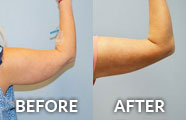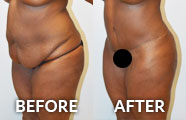Ensuring Patient Comfort
Consultations offered at our four convenient locations in Calhoun, GA, Chattanooga, TN, Ooltewah, TN and Blueridge, GA
Undergoing a surgical procedure in comfort is an expected part of any patient’s experience at Southern Surgical Arts.
And from the moment you set foot into one of our six locations in Chattanooga, Cleveland, Ooltewah, Blue Ridge, or Calhoun, we’ll ensure you’re at ease and well-informed about every stage of your treatment.
Preparing for surgery can be stressful, so during your personal consultation, we’ll tell you about the options you have regarding your anesthesia, and whether Pro-Nox – patient-administered nitrous oxide (laughing gas) – can be an available option.
If you’re interested in learning more about how we keep our patients comfortable during their treatment and to book a personal consultation, please don’t hesitate to contact us at (888) 988-5682 or fill out an inquiry form on our website. We’d be happy to discuss your options and help you make an informed decision about your care.
What is Pro-Nox?
Pro-Nox is a sedation method that helps patients feel more relaxed and comfortable during medical procedures. The system delivers a 50% oxygen and 50% nitrous oxide mixture through a breathing mask, allowing patients to self-administer it as needed. This means that you’re in control of your own comfort level throughout your procedure!
Pro-Nox can be used for a variety of procedures, including but not limited to:
- Injectables
- Tattoo Removal
- Laser Treatments
- Medium-Depth and Deep Chemical Peels
- Skin Resurfacing
- Body Contouring
- Other Minor Surgical Procedures
At Southern Surgical Arts, we ensure that every patient feels as comfortable and safe as possible while receiving care at our practice. That’s why we offer Pro-Nox as an option for patients undergoing certain treatments. Our highly trained team of professionals will guide you through the process and answer any questions you may have about how it works.
Why Choose Pro-Nox?
Pro-Nox has become a go-to solution for physicians in many fields, including plastic surgery, dentistry, and childbirth. It is an ideal option for patients who are nervous or anxious about undergoing a cosmetic procedure. It works quickly to reduce pain and anxiety, allowing patients to relax and feel more comfortable during their treatment.
Benefits of Pro-Nox
- Quick and easy to use: Pro-Nox is a self-administered system that allows you to control flow during your treatment.
- Fast-acting: You’ll start feeling the effects of Pro-Nox within seconds of inhaling it, so you won’t have to wait long to start feeling more relaxed and comfortable.
- Safe and effective: Nitrous oxide has been used in medical and dental settings for over 100 years and is considered safe when used properly. It wears off quickly, so you’ll be able to resume normal activities shortly after your procedure.
- Customizable: Our team will work with you to determine the right dosage of nitrous oxide for your needs, so you can feel confident that you’re getting the level of pain relief that you need.
- Non-addictive: Unlike opioids or other pain medications, nitrous oxide is not addictive and does not carry the same risks of dependence or withdrawal.
What Does Pro-Nox Feel Like?
Patients can expect to feel relaxed, comfortable, and even euphoric while using Pro-Nox. While side effects such as dizziness or nausea may occur, they are typically mild and temporary.
Our team at Southern Surgical Arts is dedicated to providing the highest quality treatment for our patients. If you have any questions or concerns about Pro-Nox or any other aspect of your upcoming procedure, please don’t hesitate to contact us at (888) 988-5682.
Find out more about our practice.
Anesthesia
Anesthesia is an essential component of modern surgery, providing patients with the necessary comfort and pain relief during surgical procedures. At Southern Surgical Arts, we understand that choosing to undergo anesthesia can be a daunting decision for some patients. That’s why we take great care in educating our patients on the available options, the benefits, risks, and potential complications associated with each method. We strive to ensure every patient feels safe and comfortable throughout their surgical journey.
General Anesthesia
General anesthesia is a medically-induced change of consciousness that occurs due to the administration of certain medications. (1) It ensures that you are completely asleep and comfortable throughout the entire procedure, eliminating any pain or discomfort you may feel during surgery. It also allows our skilled surgeons to perform the procedure with precision and accuracy, resulting in optimal results.
There are several types of general anesthesia used in cosmetic procedures, each with its own advantages and disadvantages. Propofol is a commonly used intravenous anesthetic agent that provides rapid onset and quick recovery times. Inhalational agents like sevoflurane and desflurane are also used and provide smooth induction and emergence from anesthesia. A general anesthetic agent like ketamine may be used for patients who cannot tolerate other forms of anesthesia.
Preparing for Surgery
- Discuss the type of anesthesia that will be used during your procedure at your personal consultation.
- Follow all instructions regarding fasting and medication use before your surgery.
- Notify your surgeon of any allergies or medical conditions that could affect your anesthesia.
- Arrange for a responsible adult to drive you home after the procedure and stay with you for at least 24 hours.
- Plan to rest for several days after your surgery to allow your body to fully recover.
Preoperative Assessment & Patient Monitoring
Before any cosmetic procedure requiring general anesthesia, a thorough preoperative assessment is performed to ensure that the patient is healthy enough for surgery. This includes reviewing the patient’s medical history, performing a physical exam, and ordering any necessary lab work or imaging studies. During the procedure, the patient’s vital signs are closely monitored. This allows us to adjust the anesthesia depth and dosages of medications as needed to maintain the patient’s safety and comfort.
Postoperative Care
After the procedure, patients are closely monitored in a recovery room to ensure that they are stable and that there are no immediate complications. Patients may experience some postoperative nausea and vomiting, which can be managed with antiemetic drugs. Emergence delirium is a rare but possible side effect of general anesthesia, and we take steps to minimize this risk.
Local Anesthesia
Local anesthesia numbs the skin, subcutaneous tissue, and peripheral nerves in preparation for a surgical procedure. (2) It works by blocking the transmission of nerve impulses, preventing the brain from receiving pain signals from the affected area. There are several ways local anesthesia can be administered, including injection, nerve block, topical cream, or spray. The most commonly used local anesthetics include lidocaine and novocaine, which are often combined with epinephrine or adrenaline to constrict blood vessels and prolong the effects of the anesthesia.
Benefits of Local Anesthesia
Here are some benefits of using local anesthesia:
- Reduced risk: Local anesthesia carries a lower risk of complications than general anesthesia, which can affect the entire body.
- Faster recovery: Patients who receive local anesthesia typically experience a faster recovery time than those who receive general anesthesia, as there are fewer side effects.
- Better precision: With local anesthesia, the surgeon can communicate with the patient and make adjustments in real time, allowing for more precise results.
- Lower cost: Local anesthesia is generally less expensive than general anesthesia since it doesn’t require as much equipment or staff.
Local Anesthesia with IV Sedation
For patients who are unable or prefer not to undergo general anesthesia, local anesthesia with conscious sedation may be an option. This involves administering medication to help the patient relax and feel comfortable without losing consciousness. Preoperative assessment and patient monitoring are essential for ensuring patient safety during any form of anesthesia.
Choosing the Right Type of Anesthesia
Overall, the type of anesthesia used for a cosmetic procedure will depend on the specific needs and preferences of the patient. Our team at Southern Surgical Arts is committed to providing safe and effective anesthesia options for all our patients.
Cost of Cosmetic Procedures in Chattanooga
During your initial consultation, we will provide you with a detailed breakdown of all costs associated with your surgery, including anesthesia fees. It is important to note that while cost is an important factor when considering any surgical procedure, it should not be the only deciding factor. When it comes to anesthesia, safety should always be the top priority. Get in touch with us to discuss your procedure at Southern Surgical Arts and book your consultation with us by filling out an online form or by calling (888) 988-5682.
Be sure to visit the Southern Surgical Arts blog to find out more about our surgical and non-surgical procedures.
FAQ
How should I prepare for surgery with Pro-Nox?
Before using Pro-Nox, it’s important to follow your doctor’s instructions carefully. There is no downtime with Pro-Nox. Pro-Nox wears off quickly after administration.
How does Pro-Nox compare to other forms of pain management?
Pro-Nox is different from other forms of pain management because it is self-administered by the patient. This means that the patient has complete control over their level of comfort and can adjust the amount of nitrous oxide they inhale as needed. Additionally, the effects of Pro-Nox wear off quickly, which allows patients to resume their daily activities soon after their procedure.
Are there any risks associated with general anesthesia?
Like any medical procedure, there are risks associated with general anesthesia. However, these risks are extremely rare and can be mitigated through careful screening and preparation.
Can I choose not to receive general anesthesia?
While general anesthesia is recommended for many cosmetic procedures, we understand that some patients may prefer not to receive it. In certain cases, local anesthesia may be an option. Our team will work with you to determine the best course of action based on your individual needs and preferences.
References
- Siddiqui BA, Kim PY. Anesthesia Stages. PubMed. Published 2020. https://www.ncbi.nlm.nih.gov/books/NBK557596/
- Garmon EH, Huecker MR. Topical, Local, and Regional Anesthesia and Anesthetics. PubMed. Published 2020. https://www.ncbi.nlm.nih.gov/books/NBK430894/



